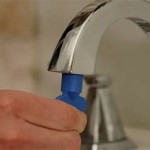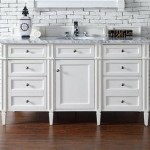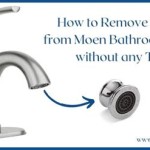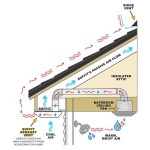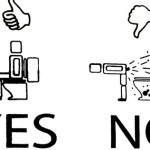How to Resurface Bathroom Cabinets
Bathroom cabinets, like any frequently used fixture, are subject to wear and tear. Humidity, splashes, and daily use can leave them looking tired and outdated, even if the underlying structure is sound. Resurfacing, also known as refacing, offers a cost-effective and environmentally friendly alternative to replacing entire cabinet units. It involves replacing the cabinet doors and drawer fronts, and applying a veneer or laminate to the exposed cabinet boxes. This process revitalizes the appearance of the bathroom without undergoing a full-scale renovation, saving time, money, and minimizing disruption. Understanding the steps involved in resurfacing bathroom cabinets allows homeowners to achieve a fresh, updated look, extending the lifespan of their existing cabinet framework.
This article will provide a comprehensive guide on how to resurface bathroom cabinets. It will cover preparation, material selection, application techniques, and considerations for achieving a professional-looking finish. By following these instructions, individuals can transform their bathroom cabinets and significantly improve the overall aesthetic of their bathroom space.
Assessing the Suitability of Resurfacing
Before embarking on a resurfacing project, the initial step involves a thorough assessment of the existing cabinets to determine their suitability for the process. Not all bathroom cabinets are ideal candidates for resurfacing. The condition of the cabinet boxes is paramount. If the boxes are structurally compromised due to water damage, rot, or significant warping, resurfacing might not be a viable long-term solution. Repairing extensive damage to the cabinet boxes may prove more costly and time-consuming than replacing the entire unit.
Examine the cabinet boxes carefully. Check for signs of water damage near the sink and toilet areas. Inspect the joints and corners for any separation or instability. Push and pull on the cabinet frames to assess their overall sturdiness. If the cabinet boxes are fundamentally sound, resurfacing becomes a practical option.
The style of the existing cabinet boxes also factors into the decision. Cabinets with simple, flat surfaces are generally easier to resurface than those with intricate moldings or complex designs. While it is still possible to resurface more ornate cabinets, it might require more specialized skills and techniques to achieve a seamless and professional finish. Furthermore, the availability of replacement doors and drawer fronts that match the existing cabinet box style should be considered. If finding suitable replacements proves difficult, resurfacing might not be the most efficient approach.
Finally, consider the overall bathroom aesthetic. Resurfacing provides an opportunity to update the look of the cabinets to align with the desired style. However, if other elements in the bathroom, such as the countertops or flooring, are also outdated or in poor condition, a more comprehensive renovation might be necessary to achieve a harmonious and balanced design. In such cases, simply resurfacing the cabinets might not yield the desired impact.
Preparing the Cabinets for Resurfacing
Proper preparation is crucial for a successful resurfacing project. Neglecting this stage can compromise the adhesion of the new veneer or laminate, resulting in a subpar finish and potentially shortening the lifespan of the resurfaced cabinets. The preparation process involves several key steps, beginning with removing all hardware, doors, and drawers.
Remove all knobs, pulls, hinges, and other hardware from the cabinet doors and drawer fronts. Store these items in a labeled container to prevent loss or confusion during reassembly. Carefully detach the doors and drawer fronts from the cabinet boxes. This often involves unscrewing hinges or removing drawer slides. Take photographs of the hardware and its placement before removal. This will provide a visual reference during reinstallation and ensures that everything is reassembled correctly.
Clean the cabinet boxes thoroughly. Use a degreasing cleaner to remove any grease, grime, or dirt buildup on the surfaces. Pay particular attention to areas around the sink and handles, where grease and spills are more likely to accumulate. Rinse the surfaces with clean water and allow them to dry completely. For stubborn stains or residue, a mild abrasive cleaner can be used, but avoid harsh chemicals that could damage the cabinet finish.
Repair any minor imperfections on the cabinet boxes. Fill small holes or cracks with wood filler, allowing it to dry completely according to the manufacturer's instructions. Sand the filled areas smooth with fine-grit sandpaper to create a level surface. Address any loose veneer or laminate by applying wood glue under the loose edges and clamping them in place until the glue dries. Remove any excess glue with a damp cloth. For more significant damage, such as deep scratches or gouges, professional wood repair might be necessary.
Sand the surfaces of the cabinet boxes to create a slightly rough texture. This provides a better surface for the new veneer or laminate to adhere to. Use medium-grit sandpaper (around 120-grit) to lightly sand the surfaces, being careful not to sand through the existing finish. Wipe away any sanding dust with a tack cloth to ensure a clean surface for application. A clean, smooth, and slightly roughened surface is paramount for achieving a durable and aesthetically pleasing resurfacing result.
Applying Veneer or Laminate
The application of veneer or laminate is the core of the resurfacing process. It demands precision and attention to detail to achieve a seamless and professional-looking finish. Selecting the appropriate material is the first step. Veneer, a thin layer of real wood, offers a natural and elegant look but requires more skill to apply. Laminate, a synthetic material, is more durable and easier to clean but can lack the warmth and texture of real wood.
Measure and cut the veneer or laminate to the appropriate size for each cabinet box surface. Use a sharp utility knife or a veneer saw for accurate cuts. Leave a slight overlap on each edge to allow for trimming after application. This ensures that the edges are fully covered and prevents gaps from forming. Dry-fit the pieces to the cabinet boxes to ensure a proper fit before applying adhesive.
Apply adhesive to both the cabinet box surface and the back of the veneer or laminate. Use a high-quality contact cement or a specialized veneer adhesive, following the manufacturer's instructions carefully. Apply an even coat of adhesive to both surfaces, ensuring that all areas are covered. Allow the adhesive to dry slightly until it becomes tacky. This typically takes a few minutes, depending on the type of adhesive used and the ambient temperature.
Carefully align the veneer or laminate with the cabinet box surface. Once the two surfaces make contact, they will bond instantly, so precise placement is crucial. Start by aligning one edge and gradually lower the veneer or laminate onto the surface, using a roller or a smoothing tool to press it firmly into place. Work from the center outwards to eliminate any air bubbles or wrinkles. Apply even pressure to ensure a strong bond between the veneer or laminate and the cabinet box.
Trim any excess veneer or laminate from the edges of the cabinet boxes. Use a sharp utility knife or a veneer trimmer to create a clean, flush edge. Be careful not to damage the surrounding surfaces. Sand the edges lightly with fine-grit sandpaper to smooth any rough spots and create a seamless transition between the veneer or laminate and the cabinet box. Apply edge banding to conceal the edges of the veneer or laminate if desired. This adds a professional touch and protects the edges from damage. Allow the adhesive to cure completely before reattaching the doors, drawers, and hardware.

How To Refinish Bathroom Cabinets Diy Domestic

How To Refinish A Bathroom Vanity Bower Power

Conquer Your Vanity Bathroom Cabinets Diy Cabinet Makeover

Diy Cabinet Refacing Reface Supplies

How To Refinish Bathroom Vanity Top With Diy Resin Thediyplan

How To Refinish A Bathroom Vanity Bower Power

Bathroom Cabinet Refacing K P Remodeling

4 Tips For Refacing Bathroom Vanity Doors Cabinet Now

How To Properly Refinish Bathroom Cabinets Strasser

How To Paint Laminate Cabinets Love Renovations
Related Posts
